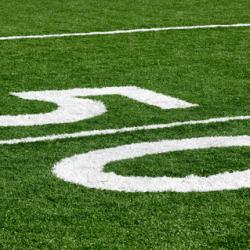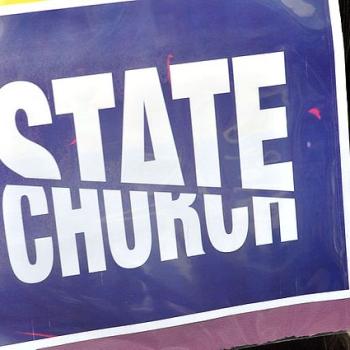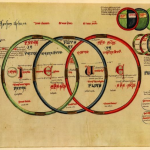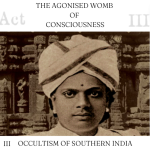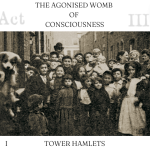What’s the deal with prayers before football games? I don’t know when it became the norm for someone to lead players and spectators in prayer before high school football games in the U.S. I don’t remember such prayers before high school football games when I was in high school in the 1960s, but perhaps we said them and I’ve forgotten. And I don’t know how widespread the practice is, or was. But in at least some parts of the country a group prayer before the game became a deeply engrained custom.
I wrote recently about the 2022 Supreme Court case of a high school football coach who led group prayer meetings at the 50 yard line after each game. I have an update on that case. But first I want to discuss an earlier prayers at football game case, Santa Fe Independent School Dist. v. Doe (2000). Comparing these two decisions, 22 years apart, might show us if anything has really changed.
We also might reflect on why it is so many people insist on mixing up the game of football with prayer and patriotism. On its face, that’s not terribly logical. Do see this Time magazine piece from 2014, “Football and Religion: The Odd Relationship Between God and the Gridiron” by Mark Edmunson. Something about the game of football “reveals some of the unspoken and unacknowledged dimensions of our lives to us, in compressed form,” Edmunson writes. And it reveals an association with tribal loyalties and group domination and other things that seep into American Christianity but which aren’t consistent with what Jesus teaches in the Gospels.re
The Football Game Prayers in Santa Fe
The Santa Fe Independent School District is a public school district in Santa Fe, Texas, in the Houston metropolitan area. The district had a long-standing practice of having a student deliver a prayer on the school’s public address system before every football game and at school graduation ceremonies. This practice was challenged by two sets of students, Catholic and Mormon, and their mothers. The students and their families disagreed with some of the content of the prayers. (And no, I’m sorry that I’ve never found examples of the prayers.) They also said the district permitted proselytizing at school, and school officials sometimes promoted revival meetings and other sectarian religious events. This created an environment in which students of minority religions felt uncomfortable.
In 1995 a district court decided the school could have students offer “nondenominational prayers” at school events if the prayers were composed entirely by the student without assistance or review of the school. Further, the prayer must avoid proselytizing, although it was all right to mention “religious figures” such as Jesus, the Buddha, or Muhammad. As part of what it considered to be a “hands off” approach, the school district had the students first vote on whether they wanted a prayer said before games. And then they voted to choose which student would compose and deliver the prayer. In this way, school officials reasoned, the prayer was coming from the student body and not from teachers or administration.
However, a Court of Appeals held that the football prayer policy was invalid, even when read by the elected student. The district challenged that decision, The district said its policy did not violate the Establishment Clause of the First Amendment because the football game prayers were private student speech, not public speech.
What the Supreme Court Decided
The key question in Santa Fe Independent School District v. Doe was whether the prayers were really students’ speech, or the school district’s. The majority opinion was written by Justice John Paul Stevens, who found the prayers to be government speech that violated the Establishment Clause. The prayer took place on school property and was broadcast over a school-owned loudspeaker to people assembled for a school-sponsored event. For some students — players, band members, cheerleaders — attendance was mandatory. The elections allowed a majority of the student body to impose their religious views on the minority. (During oral arguments, Justice Sandra Day O’Connor asked whether students might conduct campaigns for the prayer leader position based on the type of prayer they would offer.)
In his decision, Justice Stevens mentioned coercion several times. The Establishment Clause denied Congress the authority to establish a state religion, or to show favoritism to one religious tradition over others. This prevents a majority religious faction from coercing religious practices and views on a minority. In the Santa Fe decision, Justice Stevens wrote, “[T]he election mechanism established by the District undermines the essential protection of minority viewpoints. Such a system encourages divisiveness along religious lines and threatens the imposition of coercion upon those students not desiring to participate in a religious exercise. Simply by establishing this school-related procedure, which entrusts the inherently nongovernmental subject of religion to a majoritarian vote, a constitutional violation has occurred.”
This was not a unanimous decision. The three dissenters in the 6-3 decision were Chief Justice William Rehnquist, Justice Antonin Scalia, and Justice Clarence Thomas. Chief Justice Rehnquist complained that the Court’s majority opinion “bristles with hostility to all things religious in public life.” A lot of people reacted to the decision as if it were inherently anti-Christian and anti-religion. Not being allowed to say a collective prayer before a football game was going too far! They failed to take notice that the petitioners were Catholic and Mormon. And it still puzzles me how it is that religion and football became so closely tied together.
Points of Agreement
Writing for the New York Times (“Church, State and Football,” April 1, 2000), Walter Dellinger and Pamela Harris write that the majority and minority opinions largely agreed in principle. The Court has never banned all religious expression from public schools. The individual rights of the students to practice their religion must be protected. Students certainly may choose to pray in school, even in groups, as long as no one is being coerced into joining them. At the same time, both the majority and minority opinion agree that the school itself may not sponsor or promote prayer.
The disagreement seems to center on finding the line between “free expression” and “coercion.” The justices couldn’t find it in the same place. And that may have to do more with their personal experiences and background than with the law. For example, Justice Scalia, in Salazar v. Buono (2010), declared that a Latin Cross is not necessarily Christian. The Cross is just a common memorial symbol, he said. It doesn’t just represent Christianity. In that case, which involved a war veterans’ memorial, the Court decided 5-4 that the Cross was not intended to send a Christian message. Non-Christians, and many Christians, might disagree.
You Know Coercion When You Feel It
One of the best things I ever found on the Web was this article from 2005 at the right-wing site World Net Daily. The author, a self-identified evangelical Christian who was serving in the U.S. Air Force, was all in favor of pre-game prayers until he was stationed in Hawaii. A friend invited him to a high school football game. Before the game everyone was asked to stand for an invocation, and the writer stood and bowed his head, expecting a Christian prayer. “But to our extreme dismay, the clergyman who took the microphone and began to pray was not a Protestant minister or a Catholic priest, but a Buddhist priest who proceeded to offer up prayers and intonations to god-head figures that our tradition held to be pagan.” I take it this was a terribly traumatic experience for him.
By his own account he was frozen in shock and did not know what to do. If he left he might have caused hard feelings, so he stood there, feeling that he was somehow betraying God by doing so. And if this was distressing for him, an adult, how difficult would it be for a child? “Because unless you’re ready to endure the unwilling exposure of yourself and your children to those beliefs and practices that your own faith forswears, you have no right to insist that others sit in silence and complicity while you do the same to them.” Well, yes, although I’m not personally so offended by diversity of religious expression. But the nation is becoming more, not less, religiously diverse. Those who still want to use the public school system to impose their own religious practices and beliefs on the students need to understand they may not be a majority forever.
Back in 1785, James Madison explained why he opposed allowing government to show favoritism to any religion. “The Religion then of every man must be left to the conviction and conscience of every man; and it is the right of every man to exercise it as these may dictate. This right is in its nature an unalienable right. It is unalienable, because the opinions of men, depending only on the evidence contemplated by their own minds cannot follow the dictates of other men.” Madison said that as a matter of personal conscience, religion must not be dictated and controlled by the majority opinion of society. He warned us that majorities may trespass on the rights of minorities.
The Judeo-Christian Myth
Many of us who were raised Christian grew up with the term “Judeo-Christian.” This was a kind of religious culture that all Americans allegedly shared. But do read “There Is No ‘Judeo-Christian Tradition‘” by Don M. Burrows. “But in point of fact, there really is no ‘Judeo-Christian tradition.'” Burrows wrote. “Said tradition is nothing but a Cold War invention that elides thousands of years of history in the service of identity politics.” In practice, I’ve come to realize, invoking the words “Judeo-Christian” ua a means for Christians to simultaneously assimilate and erase all other religious traditions in the U.S., including Judaism.
The Judeo-Christian myth says that a Latin Cross can represent any religion. It says that a prayer can be “nondenominational,” especially if it is directed to God and not Jesus. Um, no. I don’t believe most Christians who speak of a “Judeo-Christian tradition” consciously realize they really aren’t magnanimously embracing religious diversity by invoking it. But they aren’t. And if Catholic and Mormon children in the Santa Fe Independent School District were being made uncomfortable by the religiosity around them, how might Jewish, or Muslim, or Sikh,, or Buddhist children have felt?
And the Point Is …
I was raised in a Bible Belt community in the 1950s and 1960s where public religiosity was expected and encouraged. I realize that for some people saying group prayers at public events, including public school events, is just “normal.” It’s what was always done. Being told that one can’t say those prayers any more probably does feel like a loss. But they can still pray, even on public property. If some people at Santa Fe High School football games choose to get together on school grounds and pray together before the game, they are free to do that. It just has to be done in a way that doesn’t impose on people who don’t want to pray.
And if that isn’t satisfactory, perhaps the prayers themselves were never the point. Perhaps it was always about the coercion. Perhaps it was always about tribal dominance.
Update on Kennedy v. Bremerton
The update is that Coach Joe Kennedy, having fought through the courts to be reinstated in a job from which he was dismissed in 2015, coached one game at Bremerton, Oregon, High School. At the end of the game, he knelt at the 50 yard line for a few seconds and said a prayer, to a scattering of applause. This was on September 1, 2023. The following week, he resigned.
Coach Kennedy said he had been away from the job for seven years and living in Florida. He has family members who are ill and need caretaking, he said. But it’s also been reported that the school told him he had to keep his praying separate from students. Justice Neil Gorsuch’s majority opinion in Kennedy v. Bremerton affirmed the coach’s right to pray on school property, but that wasn’t really in question. After all that struggle he still wasn’t allowed to do the thing that got him into trouble in the first place.
What cost him his job is that students were encouraged to join him in big, boisterous prayer rallies after games, and some students said they felt coerced. Justice Gorsuch managed to not address the facts of the case. So nothing really was settled. Although the Kennedy case is being hailed by conservative Christians as their permission slip to put God back in school, the Supreme Court had never ruled that individual students or staff members may never pray in school. What the Court has said, for several decades now, is that public schools can’t coerce students or anyone else to say prayers. Why is that so hard?





